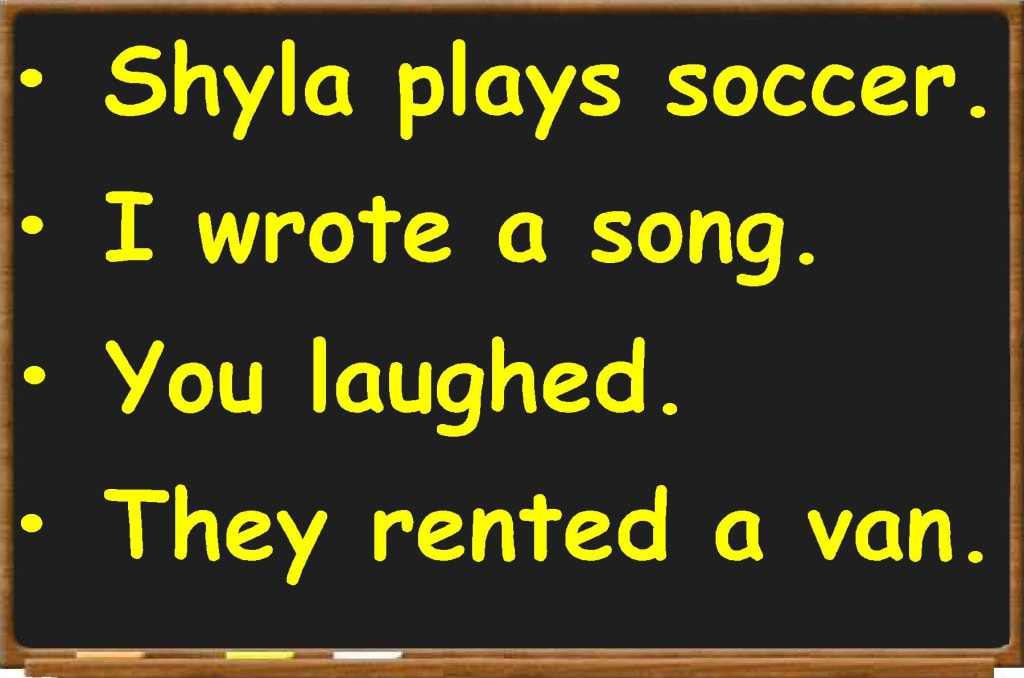
In a previous post, I covered ‘Personal Pronouns’ and ‘Singular and Plural Nouns’. I now would like to focus wholeheartedly on how the average English language learner can create a basic yet complete sentence that follows the SVO rule.
What is the SVO rule you may be asking? Good question. SVO stands for Subject – Verb – Object, which is the chronological order for which English sentences are made of. Other languages besides English may be forming sentences as Subject – Object – Verb, Object – Verb – Subject or Object – Subject – Verb but just for this particular language that we are learning which is English, we are going to stick with Subject – Verb – Object and the SVO rule.
If you have doubts about remembering that SVO stands for Subject – Verb – Object as an acronym, you can instead remember it as Some Valuable Onions (SVO) or So Very Open (SVO). These are just two examples of acronyms that you can associate with the SVO rule. It is important to remember that an English sentence will not make any sense unless it follows this particular rule and of placing these characteristics in the right chronological order.
Let’s begin with the Subject:
Subjects are often personal pronouns or proper nouns, which begin the English sentence. If you are using a personal pronoun, you would begin your sentence with I, You, We, They, He, and She if you are referring to a person. You would use a proper noun to refer to an object or a thing as ‘It.’ In addition, you can focus on using proper nouns as well that refer to specific people, places, and things. For example, you could begin a sentence with ‘The President, Albert Einstein, The Miami Dolphins, Hollywood, etc.) These proper nouns are usually formal titles referring to a person’s rank, their full name, or the title of the object or thing being referenced to.
Let’s continue with the Verb:
There are thousands of verbs that we can put in the heart of our sentences but let’s focus here on just the basic ones that are the come up the most frequently. When it comes to verbs, they usually will come right after the ‘subject’ in terms of the order to be in the middle. You also may need to add another verb or two to the sentence to make it complete with an additional subject word at the beginning if you are referencing another person in the ‘personal pronoun’ form.
When it comes to ‘verbs’, you will have the main verb of the sentence and then the ‘auxiliary verbs’ before or after the main verb which are meant to support the actual meaning of the sentence. Auxiliary verbs are not integral to basic sentence structure, but it is something to be aware of as most English sentences will have more than one verb. If you mess up the order of verbs in the sentence, do not be too concerned because that is an easy mistake to make. The key thing to keep in mind is that you are putting the verb after the subject and before the object or object(s) of the sentence.
Let’s finish with the Object:
The object of a sentence brings meaning or purpose to it so without the ending or the ‘object’ being made clear, the sentence will not function on its own within a larger paragraph or an essay. Objects can be either ‘direct’ or ‘indirect’ in terms of their relation to the subject. Types of objects include animals, people, places, things, etc. that are referenced to in some way at the end of the sentence.
A preposition can also go in front of the ‘object’ such as ‘for, to, on, with, by’ and can either be prepositions of place or prepositions of time.
Objects can be abstract, real, theoretical, or imaginary as long as they relate to both the previous subject(s) or verb(s) of the sentence. You can refer to an object directly in the sentence or indirectly depending upon the context.
It is important that the sentence when you finish writing it makes sense grammatically and in terms of using the correct vocabulary. Lastly, while you need a complete sentence, it does not have to be a run-on sentence meaning that you can break up a sentence in two or more sentences if you are saying too much.
Let’s look at a few examples going from the shortest sentence to the longest sentence:
Example #1: I like football.
Example #2: I want to play video games.
Example #3: She was not a good ballet dancer, but she was an excellent writer.
Example #4: You are not supposed to be at the music festival as you have a big test to study for tomorrow.
Example #5: Abraham Lincoln is known as the 16th President of the United States but he was also an avid reader, a lawyer, a U.S. Senator, and an outdoorsman.
Each of these examples sum up the varying levels of complexity that make up sentences in the English language. As you can see, it is likely that the longer a sentence is, the more complex it will be with additional subjects, verbs, and/or objects. The key to avoid run-on sentences is to look over your written work to make sure that the sentence is following the SVO rule but has the right vocabulary to go along with it.
The first example starts us off with one subject, one verb, and one object. The second example adds an auxiliary verb to the sentence and adds a preposition as well. The third sentence enters in a comma as well as an explanation regarding how ‘she’ was ‘not’ a ballet dancer, ‘but’ was an excellent writer. You have two objects, a preposition, and the same verb being used twice in the simple past tense. To add on to the complexity, the fourth sentence highlights the two objects as well as three total verbs and has a time frame by using ‘tomorrow’ as its indirect object at the end of this example. Lastly, the fifth and most complete English sentence discusses a real-life subject in President Abraham Lincoln and how he could have a number of other ‘objects’ associated with him. This sentence also has different verbs as well as a descriptive adjective like ‘avid’ to add some flair to this last example.
As you can see from my explanations and my examples, English language sentences are as diverse and as varied as the language itself. Whether its three words or thirty words, one complete and compelling sentence can make all the difference in making you both a better English writer and a better English learner overall. Good luck and remember to use this post as a way to begin your quest to create excellent English sentences!
About the Creator
Ben W
Ben helps students from around the world to improve their English language skills. Ben enjoys traveling around the world, developing his writing abilities, and reading good books.






Comments
There are no comments for this story
Be the first to respond and start the conversation.